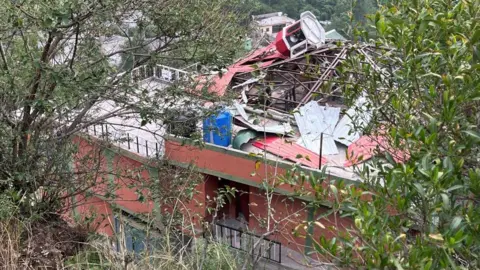The Line of Actual Control (LAC), the de facto border between India and China, has once again become a hotspot of rising military and political tension. After the deadly 2020 Galwan Valley clash, the region had seen relative calm — but as of mid-2025, reports suggest renewed troop movements, aggressive infrastructure development, and diplomatic silence from both sides. What’s really happening along the LAC in 2025? Is this a repeat of 2020—or something even bigger? A Quick Recap – What Happened at LAC Before (2020–2023)? In June 2020 , Indian and Chinese troops clashed in Galwan Valley, leading to the death of 20 Indian soldiers and an unknown number of Chinese casualties. After global attention and internal pressure, both sides began disengagement talks. Temporary buffer zones were created. Between 2021–2023 , several rounds of Corps Commander-level meetings were held, but full withdrawal never happened. China maintained strong positions in areas like Pangong Tso, Depsan...
On 22 April 2025, a terror attack in Pahalgam—killing 26 tourists—triggered the most intense military crisis between India and Pakistan in decades Wikipedia +7 . What followed was a sharp escalation: missile strikes, drones, air‑defense duels, and grand strategic signaling—culminating in a U.S.-brokered ceasefire on 10 May 2025 NBR .

User: Grubb CC BY-SA 3.0
Why It StartedTrigger Event: 26 tourists killed in Kashmir on 22 April—India blamed Pakistan-based militants, Pakistan denied involvement Al Jazeera+3.

- Diplomatic Tension: India suspended the Indus Waters Treaty and closed borders; Pakistan responded by closing airspace to Indian airlines The Times+9.

Military Escalation & Operations
Operation Sindoor (India, 7 May)
- India launched missiles and air strikes on nine targets in Pakistan and PoK—claiming destruction of terrorist infrastructure and 100 militants killed Wikipedia+5.

- Pakistan countered, reporting 31 civilian deaths and damage to infrastructure Wikipedia+1.

Pakistan’s Retaliation: Operation Bunyan al‑Marsus
- Pakistan responded (10 May) with drone and missile strikes targeting 26 Indian military sites, including airbases Wikipedia+15.

- Shelling along the LoC hit civilian centers—Poonch saw multiple fatalities, schools destroyed Center for the Study of Organized Hate.

Air & Drone Warfare
- First time both sides used drones and cruise missiles (BrahMos, SCALP-EG, Fatah-I/II) in direct combat Wikipedia+1.

- Pakistani J-10 fighters reportedly shot down multiple Indian jets, including Rafales and Mirages; India claimed no Rafale losses Wikipedia+3.

Losses & Damages- Casualties: Indian sources: 16 civilians + unknown military; Pakistani sources: 31 civilians + militants Wikipedia.
- Aircraft: Up to 4 Indian jets downed—confirmed Rafale, Mirage; Pakistanplanes not officially reported Wikipedia.
- Infrastructure: Damage to airbases (Rawalpindi’s Nur Khan), schools, radar, and hydropower plants Wikipedia+2.
Ceasefire & Diplomatic Aftermath
- Ceasefire effective 10 May 2025, with U.S. President Trump mediating Wikipedia+15.
- Tense truce: both sides reported violations, shelling continued along the LoC Wikipedia+3.
- Diplomatic shifts: Pakistan gained international sympathy; India warned of nuclear dangers; China accused of providing intelligence to Pakistan .
- U.S. mediation seen as favorable to Pakistan, drawing criticism that India was pressured Reuters.
Why It Started

- Diplomatic Tension: India suspended the Indus Waters Treaty and closed borders; Pakistan responded by closing airspace to Indian airlines The Times+9.

Military Escalation & Operations
Operation Sindoor (India, 7 May)
- India launched missiles and air strikes on nine targets in Pakistan and PoK—claiming destruction of terrorist infrastructure and 100 militants killed Wikipedia+5.

- Pakistan countered, reporting 31 civilian deaths and damage to infrastructure Wikipedia+1.

Pakistan’s Retaliation: Operation Bunyan al‑Marsus
- Pakistan responded (10 May) with drone and missile strikes targeting 26 Indian military sites, including airbases Wikipedia+15.

- Shelling along the LoC hit civilian centers—Poonch saw multiple fatalities, schools destroyed Center for the Study of Organized Hate.



Air & Drone Warfare
- First time both sides used drones and cruise missiles (BrahMos, SCALP-EG, Fatah-I/II) in direct combat Wikipedia+1.

- Pakistani J-10 fighters reportedly shot down multiple Indian jets, including Rafales and Mirages; India claimed no Rafale losses Wikipedia+3.

Losses & Damages
- Casualties: Indian sources: 16 civilians + unknown military; Pakistani sources: 31 civilians + militants Wikipedia.
- Aircraft: Up to 4 Indian jets downed—confirmed Rafale, Mirage; Pakistanplanes not officially reported Wikipedia.
- Infrastructure: Damage to airbases (Rawalpindi’s Nur Khan), schools, radar, and hydropower plants Wikipedia+2.
Ceasefire & Diplomatic Aftermath
- Ceasefire effective 10 May 2025, with U.S. President Trump mediating Wikipedia+15.
- Tense truce: both sides reported violations, shelling continued along the LoC Wikipedia+3.
- Diplomatic shifts: Pakistan gained international sympathy; India warned of nuclear dangers; China accused of providing intelligence to Pakistan .
- U.S. mediation seen as favorable to Pakistan, drawing criticism that India was pressured Reuters.
Who “Won”?
Neither side achieved decisive victory. Analysts describe it as a strategic stalemate:
- India demonstrated long-range strike capability but suffered aircraft losses and faced diplomatic pushback .
- Pakistan maintained deterrence, downed jets, and gained diplomatic capital—but sustained infrastructure damage Asia Pacific Foundation of Canada+2.
- Overall assessment: a draw, but one with long-term implications for drone warfare, nuclear strategic signaling, water treaties, and diplomatic balance .
Comments
Post a Comment